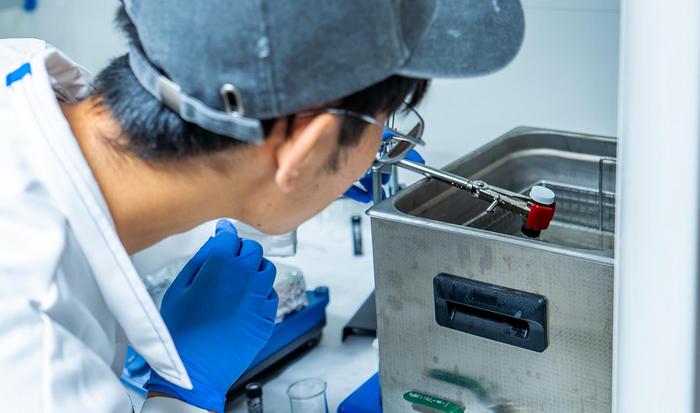Oct 22 2024
Electronic Noses
 I am always sniffing around (pun intended) for new and interesting technology, especially anything that I think is currently flying under the radar of public awareness but has the potential to transform our world in some way. I think electronic nose technology fits into this category.
I am always sniffing around (pun intended) for new and interesting technology, especially anything that I think is currently flying under the radar of public awareness but has the potential to transform our world in some way. I think electronic nose technology fits into this category.
The idea is to use electronic sensors that can detect chemicals, specifically those that are abundant in the air, such as volatile organic compounds (VOCs). Such technology has many potential uses, which I will get to below. The current state of the art is advancing quickly with the introduction of various nanomaterials, but at present these sensing arrays require multiple antenna coated with different materials. As a result they are difficult and expensive to manufacture and energy intensive to operate. They work, and often are able to detect specific VOCs with 95% or greater accuracy. But their utility is limited by cost and inconvenience.
A new advance, however, is able to reproduce and even improve upon current performance with a single antenna and single coating. The technology uses a single graphene oxide coated antenna which then uses ultrawide microwave band signals to detect specific VOCs. These molecules will reflect different wavelengths differently depending on their chemical structure. That is how they “sniff” the air. The results are impressive.
The authors report that a “classification accuracy of 96.7 % is attained for multiple VOC gases.” This is comparable to current technology, but again with a simpler, cheaper, and less energy hungry technology. Further, they actually has better results in terms of discriminating different isomers. Isomers are different configurations of the same molecular composition – same atoms in the same ratios and but arranged differently, so that the chemical properties may be different. This is a nice proof of concept advance in this technology.
Now the fun part – let’s speculate about how this technology might be used. The basic application for electronic noses is to automatically detect VOCs in the environment or associated with a specific item as a way of detecting something useful. For example, this could be used as a breath test to detect specific diseases. This could be a non-invasive bedside quick test that could reliably detect different infections, disease states, event things like cancer or Alzheimer’s disease. When disease alters the biochemistry of the body, it may be reflected in VOCs in the breath, or even the sweat, of a person.
VOC detection can also be used in manufacturing to monitor chemical processes for quality control or to warn about any problems. They could be used to detect fire, gas leaks, contraband, or explosives. People and things are often surrounded by a cloud of chemical information, a cloud that would be difficult to impossible to hide from sensitive sniffers.
So far this may seem fairly mundane, and just an incremental extrapolation of stuff we already can do. That’s because it is. The real innovation here is doing all this with a much cheaper, smaller, and less energy intensive design. As an analogy, think about the iPhone, a icon of disruptive technology. The iPhone could not really do anything that we didn’t already have a device or app for. We already had phones, texting devices, PDAs, digital cameras, flashlights, MP3 players, web browsers, handheld gaming platforms, and GPS devices. But the iPhone put all this into one device you could fit in your pocket, and carry around with you everywhere. Functionality then got added on with more apps and with motions sensors. But the main innovation that changed the world was the all-in-one portability and convenience. A digital camera, for example, is only useful when you have it on you, but are you really going to carry around a separate digital camera with you every day everywhere you go?
This new electronic nose technology has the potential to transform the utility of this tech for similar reasons – it’s potentially cheap enough to become ubiquitous and portable enough to carry with you. In fact, there is already talk about incorporating the technology into smartphones. That would be transformative. Imagine if you now also could carry with you everywhere at all times an electronic nose that could detect smoke, dangerous gas, that you or others might be ill, or that your food is spoiled and potentially dangerous.
Imagine that most people are carrying such devices, and that they are networked together. Now we have millions of sensors out there in the community able to detect all these things. This could add up to an incredible early warning system for all sorts of dangers. It’s one of those things that is challenging to just sit here and think of all the potential specific uses. Once such technology gets out there, there will be millions of people figuring out innovative uses. But even the immediately obvious ones would be incredibly useful. I can think of several people I know personally whose lives would have been saved if they had such a device on them.
As I often have to say, this is in the proof-of-concept stage and it remains to be seen if this technology can scale and be commercializable. But it seems promising. Even if it does not end up in every smartphone, having dedicated artificial nose devices in the hospital, in industry, and in the home can be extremely useful.






